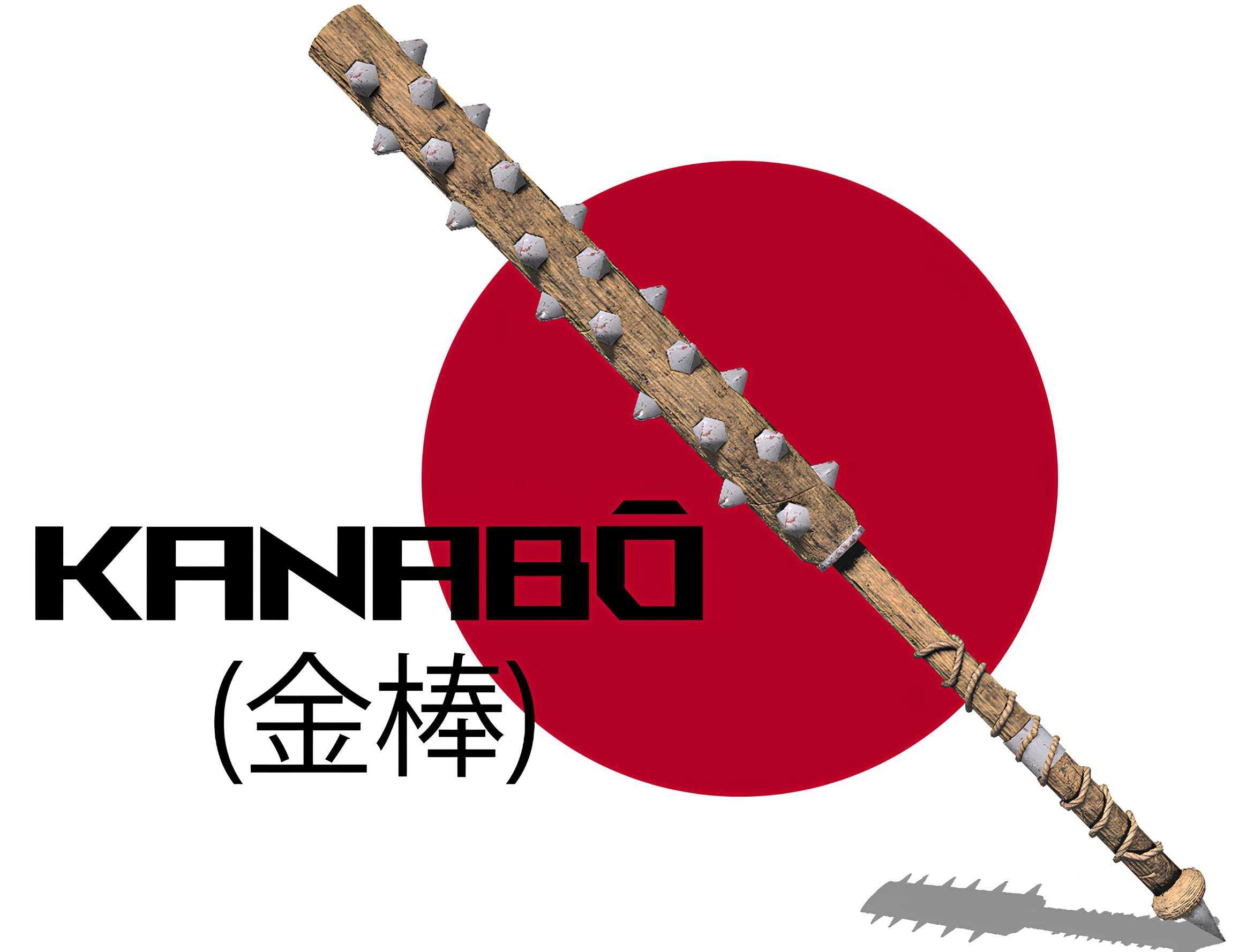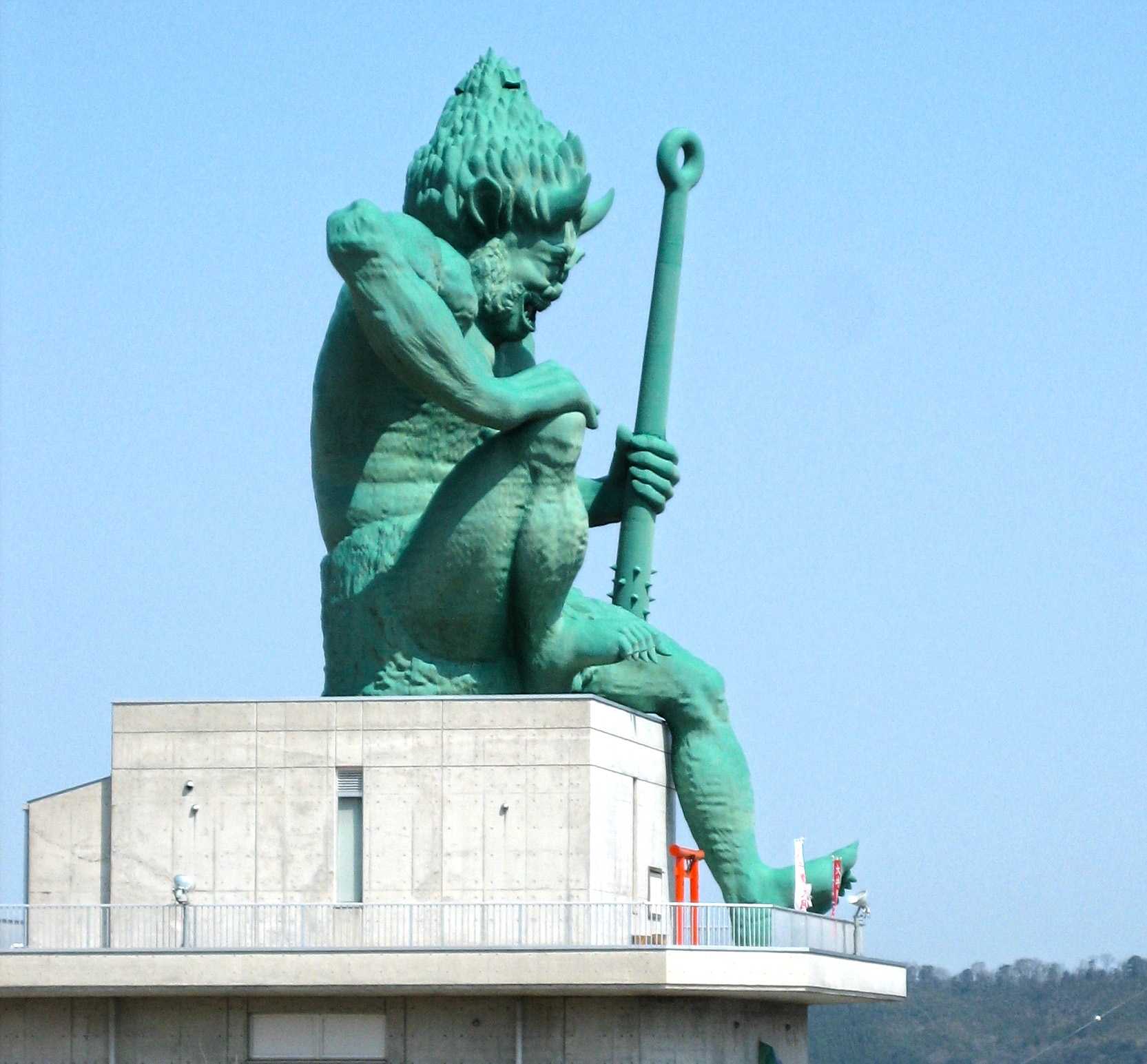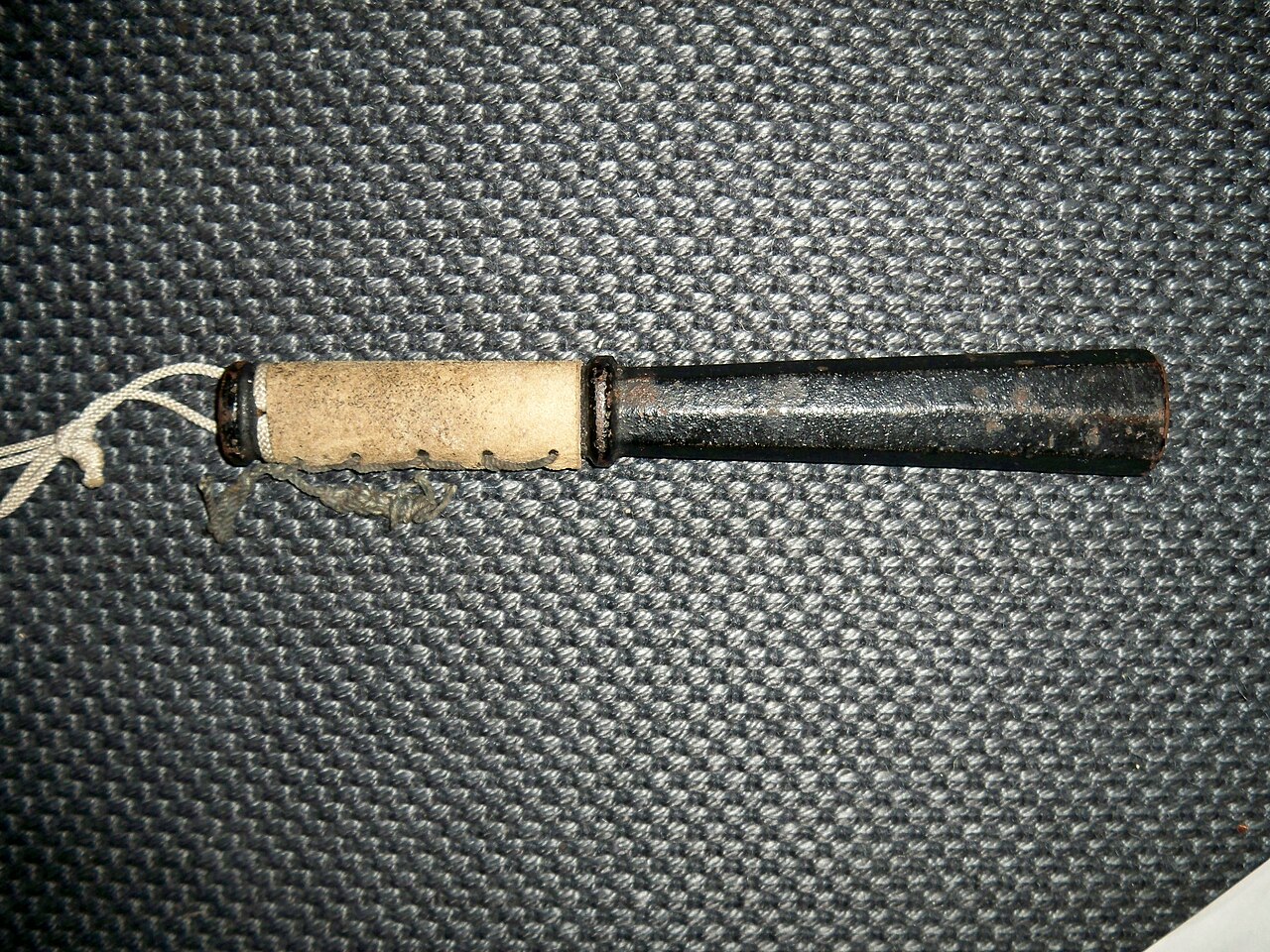Tetsubō or tetsubo (鉄棒, “iron stick”) is a club-style Japanese cold weapon. It is known for its durability and reliability. In essence, it is a heavy and powerful club, often forged from iron or steel. The striking part (the head) of the weapon constituted half of its length, and it was often completely made of metal and equipped with metal spikes. In contrast, the kanabo (金棒, “metal stick”), a similar weapon, was mainly a wooden weapon with metal studs. Due to its heavy weight, a tetsubo provides immense crushing power.
“Tetsu” means “iron,” and “bo” means “stick.”
| Tetsubo | |
|---|---|
| Type: | Club |
| Origin: | Japanese |
| Utilization | Infantry, Mythological |
| Length: | Total: 83–118″ (2.1–3 m), head: 24–35″ (60–90 cm) |
| Weight: | 11–20 lb (5–9 kg) |
Tetsubo’s Design

Tetsubo is characterized by its length, which typically ranges from 80 to 120 inches (2 to 3 m), with a spiked head measuring between 25 and 35 inches (60 to 90 cm). This edged weapon usually weighed five times as much as a baseball bat, around 11 lb (5 kg), and was three times its length.
This heavy melee weapon possesses a distinctive shape reminiscent of a bat, featuring a substantial end and a gradually narrowing handle adorned with a pommel. Alternatively, it can maintain a straight body extending from the handle to the tip.
The shaft’s cross-sectional profile offers two possibilities: a circular shape or a polygonal structure composed of parallel surfaces symmetrically encircling the axis. A tetsubo could be coated with iron, copper, silver, or even gold if the user could afford it. The weapon was rather popular in the Sengoku period (1467–1615).

Tetsubo vs. Kanabo
Although tetsubo seems like kanabo, kanabo’s bludgeoning part that deals damage is not ironed with metal. However, the distinction between this ancient club and kanabo is often unclear due to a lack of definitive historical sources concerning the former. Thus, the two weapons are frequently confused.
Due to its iron composition, a tetsubo was typically quite heavy, which resulted in its infrequent usage among soldiers.

For comparison, most kanabos weighed from 4.5 to 11 pounds (2 to 5 kg), but according to some sources, this Japanese war club weighed as much as 11 to 20 lb (5–9 kg).
The tetsubo exhibits similarities to the kanabo, yet it possesses the distinct characteristic of being predominantly composed of steel or iron rather than wood. The dimensions of these weapons encompass a wide range, often featuring a smaller and more manageable size designed for one-handed use.
Use of the Tetsubo
Religion

This heavy club is also more often mentioned in mythological texts. The Japanese believed that the brutal demons “oni” preferred them because of their immense size and strength made them feel at home while wielding the weapon.
They utilized this metal club against everything that stood in their way. Oni were lawbreakers. Indeed, in Japan, there is a saying that goes “giving a tetsubo [or kanabo] to an oni,” which signifies granting an advantage to someone who is already formidable from the beginning.
Samurai
On the other hand, samurai often engaged in battle with peasants who opposed their daimyo (the local ruler), and they also faced off against ninjas.
When the samurai had to choose between utilizing their pricey katanas, yaris, or naginatas and the cheap, unbreakable, and easy-to-replace tetsubo, they generally opted for the latter. Many villagers met their untimely end at the crushing hands of this iron club.
Monks
Among the medieval Buddhist monk soldiers sohei (“monk soldiers”) and yamabushi (Japanese mountain ascetic hermits), the tetsubo was one of the most preferred weapons.
Military
In battle, a tetsubo was used to crush the legs of opposing horses and defeat armored foes. Because the inertia of this heavy weapon would knock its user off balance if s/he missed a strike, mastering this armor-piercing club (also known as tetsubo-jutsu) required both considerable strength and skill.
Various Types of Tetsubo

There was a wide range of sizes and styles of tetsubo, with the biggest being two-handed and as tall as a human, and the smallest often being one-handed and no longer than a forearm.
The nyoibo, konsaibo, kanabo, and ararebo are all similar clubs. Samurai in feudal Japan utilized the konsaibo. The same samurai also utilized the ararebo, a form of spiked or studded two-handed variant.
On the other hand, the kanemuchi (or kanamuchi) and the aribo (a.k.a. kirikobo or gojo) are both solid iron weapons that lack any studs or spikes. These stick weapons were common in medieval Japan.
A common shape that they assumed was that of a simple metal rod. Some kanemuchi reached 39 inches (1 m) in length and were made from a single piece of iron.
Tetsubo at a Glance
What is the design and composition of a Tetsubo?
It is a club-style Japanese cold weapon known for its durability and reliability. It is a heavy and powerful club typically made of iron or steel. Like the rest of the weapon, the striking part of the weapon is completely made of metal and equipped with metal spikes.
How does Tetsubo differ from Kanabo?
While Tetsubo and Kanabo are similar weapons, there are distinct differences between them. Kanabo is mainly a wooden weapon with metal studs, while the other is predominantly composed of steel or iron. The weapon’s heavy weight provides immense crushing power compared to the relatively lighter Kanabo.
What were the common uses of Tetsubo?
The weapon found usage among various groups. Samurai often chose to wield this iron or steel club in battle due to its affordability, durability, and ease of replacement. Japanese mountain ascetic hermits and medieval Buddhist monk soldiers both favored it. In battle, it was employed to crush the legs of opposing horses and defeat armored foes.
What are the different types of Tetsubo?
This club came in various sizes and styles. The biggest variants were two-handed and as tall as a human, while the smallest were one-handed and forearm-length. Some notable types include nyoibo, konsaibo, kanabo, ararebo, kanemuchi, and aribo. These variations had different features such as spikes, studs, or solid iron construction.
References
- Featured Image: Photo by JolieBlanc, CC BY 3.0 / Cropped from original.
- Kogan, Daniel, and Sun-Jin Kim, 1996. Tuttle Dictionary Of The Martial Arts Of Korea, China & Japan. AbeBooks.
- Serge Mol, 2003. Classical Weaponry of Japan: Special Weapons and Tactics of the Martial Arts. Google Books.
- Don Cunningham, 2012. Samurai Weapons: Tools of the Warrior. Tuttle Publishing.

